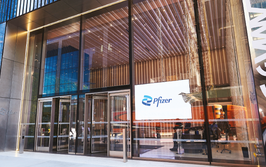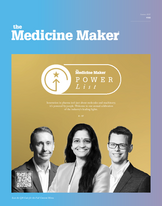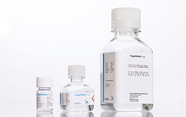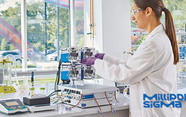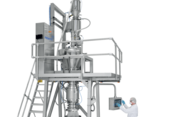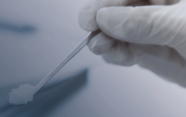Packaging for Biologics: Complexity with Flexibility
Understanding the role of ready-to-use solutions and flexibility when it comes to primary packaging for biologics
Daniel Martinez | 4 min read | Practical
sponsored by Stevanato Group
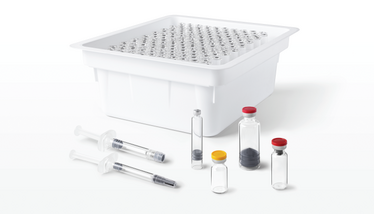
The biologics market is evolving rapidly, and so are expectations around drug delivery. Many new biologics are high-concentration formulations intended for subcutaneous injection, which introduce challenges around viscosity and delivery. At the same time, there is also growing preference from patients for at-home administration. Each of these trends adds pressure on primary packaging to perform reliably.
Choosing the right primary packaging for a biologic drug product can be a more complex task than expected. Biologics are inherently sensitive molecules and stability is paramount, from understanding leachables to potential container interactions – but that’s just one piece of the puzzle. Packaging decisions must align with every stage of a product’s lifecycle, including manufacturing constraints, fill-finish capabilities, injection route, patient experience, and regulatory compliance.
There’s no such thing as a one-size-fits-all solution. Drug developers must consider all aspects of their drug’s needs – and keep in mind that these may change during development. Vials are typically used in preclinical or phase I development because they are easier to handle in the lab. As the product progresses, however, there tends to be greater adoption of more patient-friendly solutions, such as prefilled syringes or auto injectors. Smaller biotech firms might not have the infrastructure for syringes early on and may choose to stick with vials, but the ultimate goal should always be flexibility throughout development.
Ready-to-use formats and flexibility
With many different aspects to consider, packaging flexibility is a strategic imperative. At Stevanato Group, we strongly advocate for a platform-based approach that gives pharmaceutical companies flexibility across development and manufacturing. To this end, our ready-to-use (RTU) solutions are designed to provide container flexibility by allowing manufacturers to process multiple formats, including vials, syringes, or cartridges, using the same fill-finish line. This approach supports the transition from one container type to another as a drug evolves, while maintaining regulatory compliance and improving operational efficiency.
RTU solutions offer many advantages. The increasing stringency of regulatory guidelines – such as EU GMP Annex 1 – underscores the importance of minimizing contamination risks at every stage. RTU containers reduce human intervention by arriving prewashed, siliconized (if needed), and sterilized. This supports both compliance and operational efficiency, while also improving line uptime and product yield. Even materials we often consider inert, such as glass, can interact with sensitive biologics under certain conditions. pH shifts, delamination, silicone particulates, and protein absorption are all real concerns. To address these concerns, we offer the EZ-fill® Platform, a fully integrated presterilized containment solution for pharma companies’ aseptic manufacturing.
In EZ-fill® syringe systems, Alba® represents the best-in-class solution for biologics. Alba® features an internal crosslinked silicone coating that preserves drug stability over time and de-risks the development of sensitive drugs.
We’ve also innovated around particulate reduction in collaboration with partners such as Gerresheimer. Our EZ-fill Smart® platform eliminates the Tyvek lid from traditional nest-and-tub formats, replacing it with a heat-sealed film. This significantly reduces particulate generation – by 90 percent in some tests – when opening the tub, addressing a known challenge with standard packaging. Operationally, the benefits of RTU extend beyond compliance. With fewer line components – no washers or tunnels – manufacturers save on validation, water, and energy and by eliminating time-consuming steps like sterilization and washing, they achieve significant reductions in production time and costs.
Ready for agility
aster changeovers and reduced downtime also allow for more agile production, with modern RTU lines able to operate at speeds comparable to traditional bulk lines, without compromising quality or throughput. Contract manufacturers, in particular, benefit from RTU’s scalability. With a single flexible line, a CMO can support a diverse portfolio of clients and container types, improving scheduling, responsiveness, and further improving cost-effectiveness.
For companies with existing infrastructure, integrating RTU is still an option. Older fill-finish lines can often be retrofitted – by removing or bypassing washers and tunnels – to accommodate RTU containers. While these setups may not support multiple formats on the same line, they still offer the benefits of lower contamination risk, better compliance, and improved efficiency.
Ultimately, selecting primary packaging for a biologic product isn’t just about the molecule. It’s about the full context in which that drug will be used. Will it be injected at home or in a hospital? What’s the viscosity at commercial concentration? Is the delivery device compatible with the container and the patient? All of these questions matter. That’s why we pride ourselves on being “nosey” with our partners – asking the right questions early so we can help guide them toward the best packaging strategy for their drug, their process, and most importantly, their patient.
RTU isn’t a silver bullet, but it offers a compelling way to simplify the complexity of biologics packaging. With the right approach, it can support stability, compliance, operational agility, and patient access to lifechanging therapies.
Head of Product Management DCS & Analytical Services, Stevanato Group






